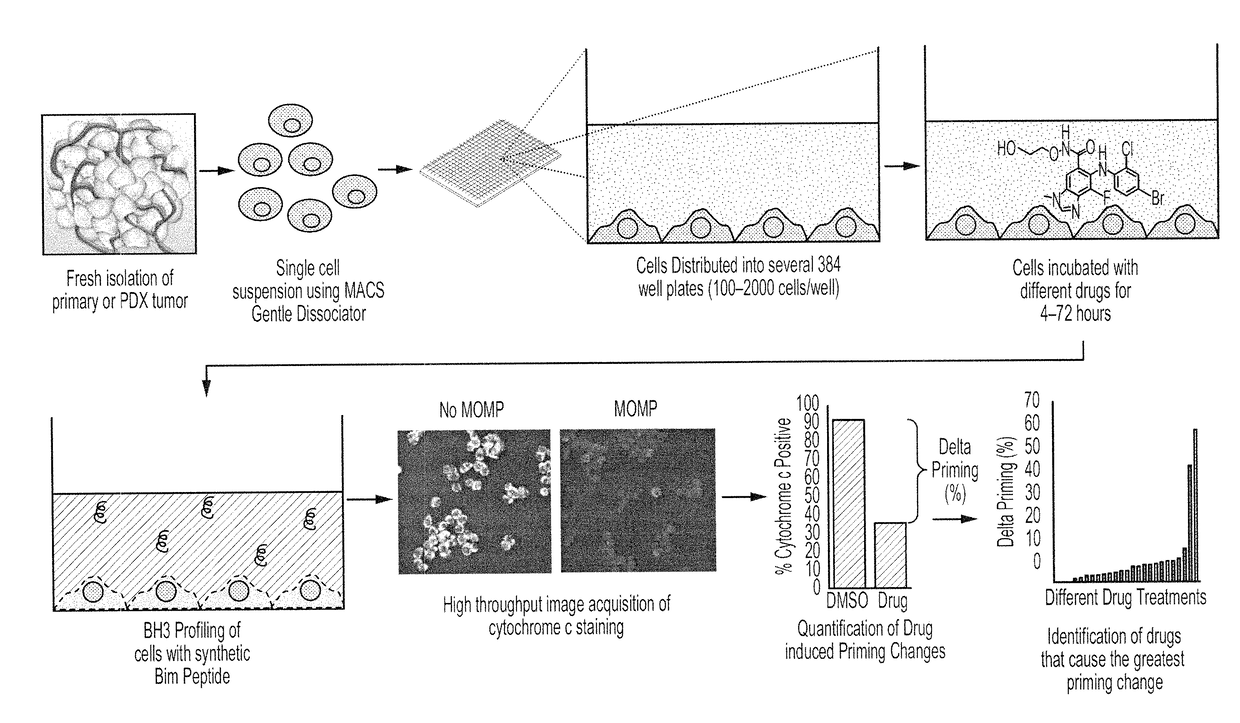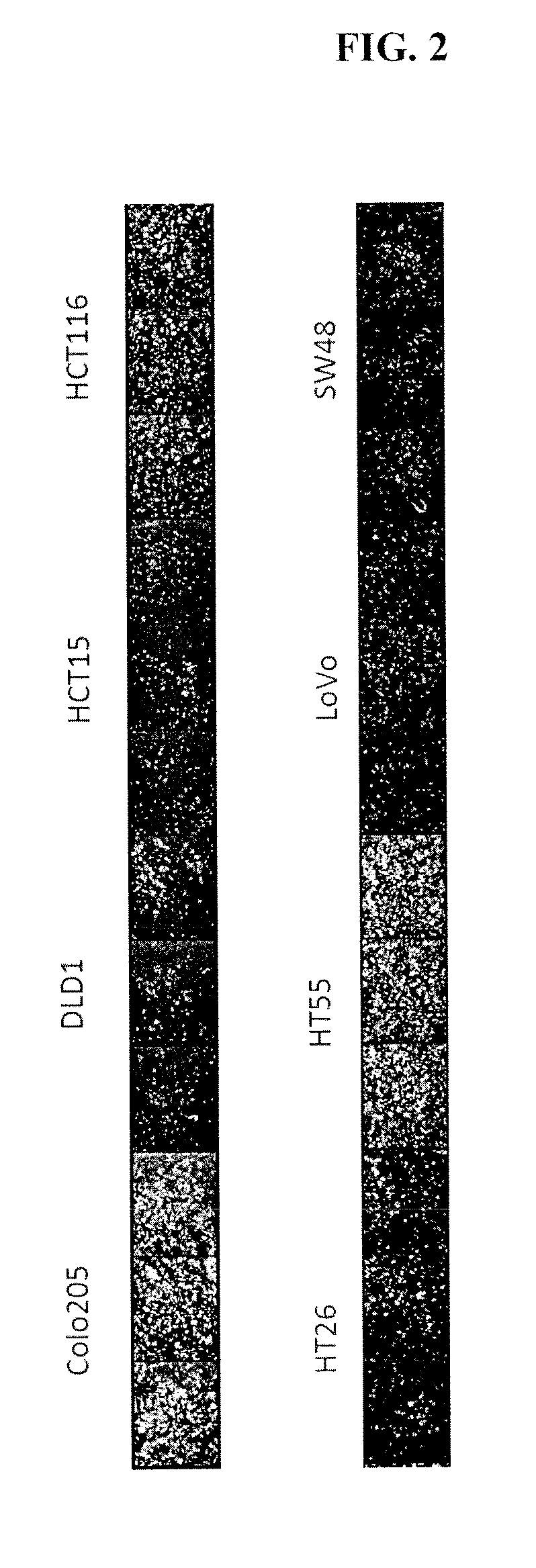High throughput bh3 profiling: a rapid and scalable technology to bh3 profile on low numbers of cells
a bh3 and low number technology, applied in the field of high throughput bh3 profiling, can solve the problems of increasing error rate, large quantity of limited material required in the process, and limitations a barrier to scale, and achieve the effect of altering the apoptotic sensitivity of cells
- Summary
- Abstract
- Description
- Claims
- Application Information
AI Technical Summary
Benefits of technology
Problems solved by technology
Method used
Image
Examples
example 1
ughput Dynamic BH3 Profiling
[0085]Dynamic BH3 Profiling (DBP) determines how a drug alters apoptotic sensitivity of primary human tumors (or patient derived xenografts). Currently used methods of dynamic BH3 profiling involve treating cells with a chemical compound in a well for 16-24 hours, lifting the cells off the well, using a centrifuge to separate cells from media and placing them in a BH3 profiling buffer (DTEB) and BH3 profiling peptides. Loss of endogenous cytochrome c is measured, and instances where there is significant loss indicates that a drug sensitizes cells for apoptosis. This is a laborious process involving a lot of human operator handling and a lot of tumor cells both which represent a barrier to scale.
[0086]This example describes an embodiment of high throughput BH3 Profiling protocol in which the cells are not removed from culture and the drugs, BH3 profile buffers and peptides are added to the cells in situ. There are two critical differences between the proto...
PUM
| Property | Measurement | Unit |
|---|---|---|
| residual volume | aaaaa | aaaaa |
| time | aaaaa | aaaaa |
| concentration | aaaaa | aaaaa |
Abstract
Description
Claims
Application Information
 Login to View More
Login to View More - R&D
- Intellectual Property
- Life Sciences
- Materials
- Tech Scout
- Unparalleled Data Quality
- Higher Quality Content
- 60% Fewer Hallucinations
Browse by: Latest US Patents, China's latest patents, Technical Efficacy Thesaurus, Application Domain, Technology Topic, Popular Technical Reports.
© 2025 PatSnap. All rights reserved.Legal|Privacy policy|Modern Slavery Act Transparency Statement|Sitemap|About US| Contact US: help@patsnap.com



